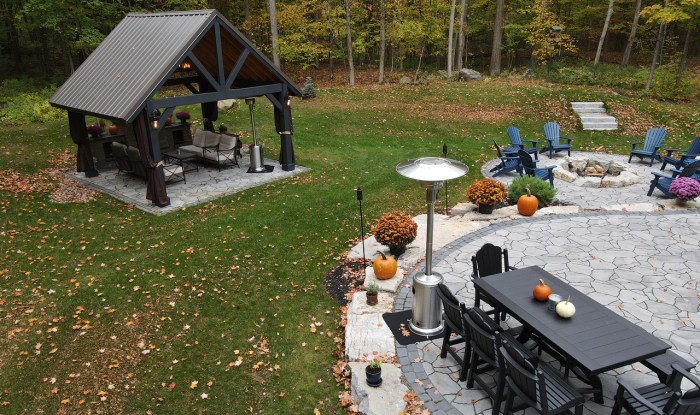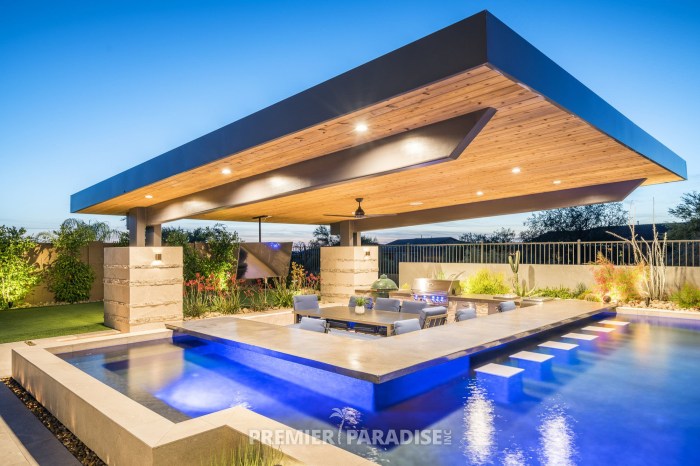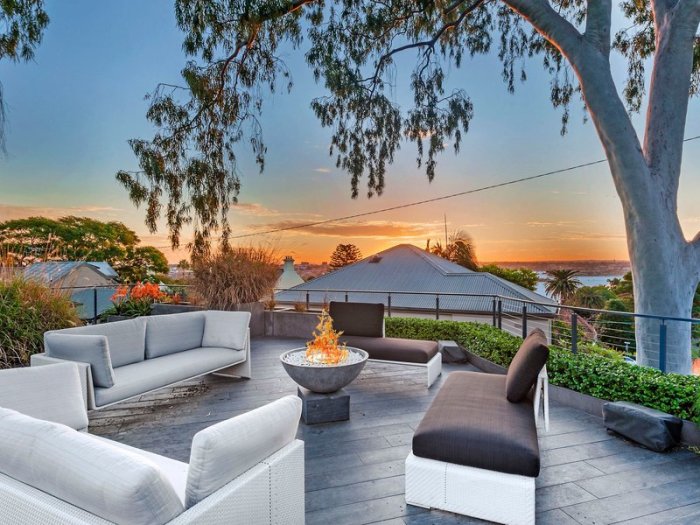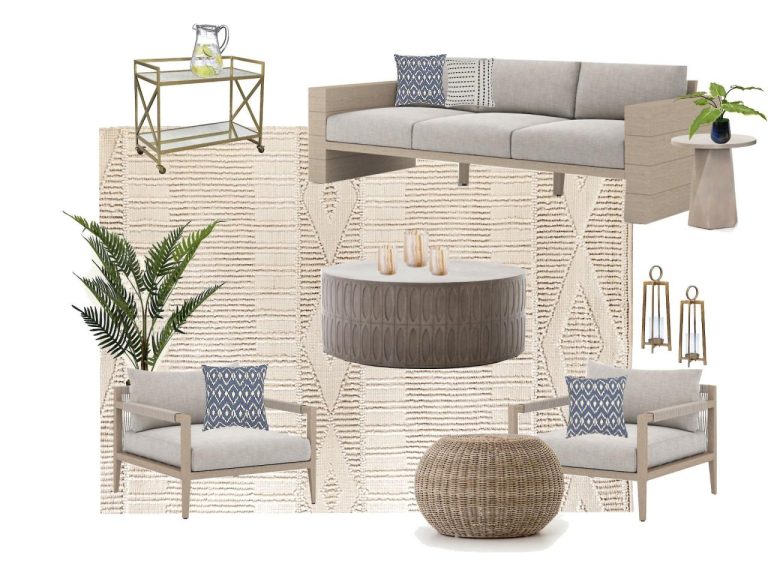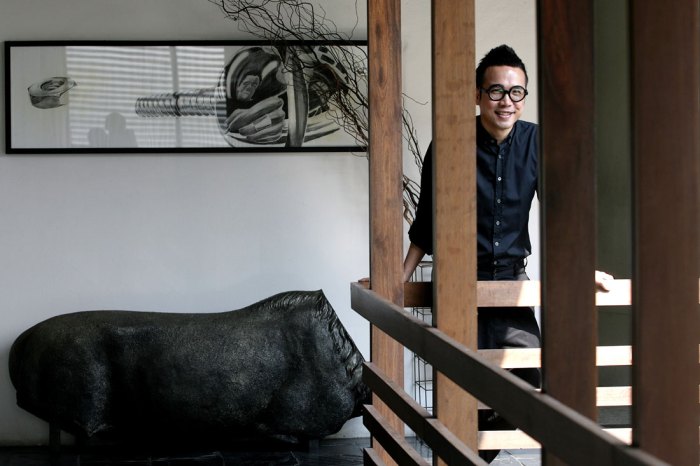Backyard Living Spaces Design & Enjoy
Backyard living spaces are transforming how we use our outdoor areas. No longer just a patch of grass, they’re becoming extensions of our homes, offering spaces for relaxation, entertaining, and even dining al fresco. From cozy patios to expansive decks with outdoor kitchens, the possibilities are endless, limited only by your imagination and budget. This guide explores everything you need to know to create your perfect outdoor oasis.
We’ll cover design elements, functionality, budget-friendly options, sustainable practices, and different design styles, helping you navigate the process of creating a backyard space that reflects your style and enhances your lifestyle. We’ll also tackle practical considerations like weatherproofing and maintenance to ensure your outdoor haven remains enjoyable for years to come.
Defining Backyard Living Spaces
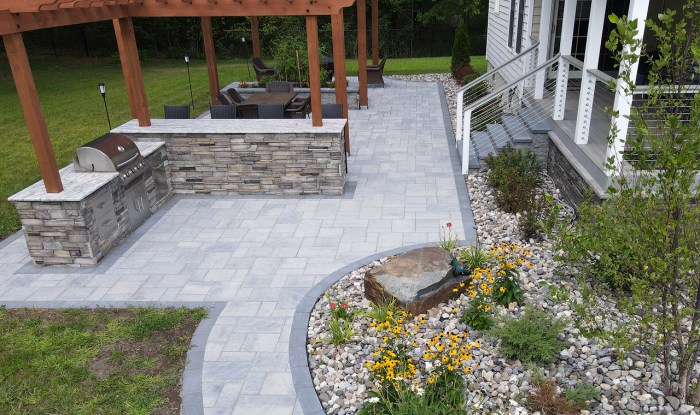
Source: peakec.com
Backyard living spaces encompass a wide variety of areas designed to extend the functionality and enjoyment of a home outdoors. These spaces range from simple, small additions to elaborate, multi-functional oases, all tailored to suit individual lifestyles and preferences. The key is to think creatively about how to best utilize the available space to create an outdoor room that complements your home’s interior.
Backyard living spaces are defined by their purpose and design. They offer a seamless transition between indoor and outdoor living, blurring the lines between the home and its surroundings. This allows homeowners to enjoy the benefits of both worlds – the comfort and convenience of indoors, combined with the fresh air and natural beauty of the outdoors.
Types of Backyard Living Spaces by Size and Functionality
The size and functionality of a backyard living space directly impacts its design and features. Smaller spaces might prioritize efficient use of area, while larger spaces can accommodate multiple zones with diverse functions. Here are some examples:
- Small Spaces (e.g., patios, balconies): These spaces often focus on intimate seating areas. A small patio might feature a bistro set for two, while a balcony could include a couple of comfortable chairs and a small table. The emphasis is on maximizing comfort within a limited footprint. Materials like wrought iron or lightweight furniture are often chosen to avoid overwhelming the space.
- Medium Spaces (e.g., decks, covered patios): These offer more flexibility. A medium-sized deck might incorporate a dining area, a lounge area with seating, and perhaps some potted plants. Covered patios provide shade and protection from the elements, allowing for year-round use. Outdoor kitchens or grilling areas can be incorporated into medium spaces, significantly increasing their functionality.
- Large Spaces (e.g., expansive patios, outdoor rooms): These spaces allow for the creation of multiple zones. A large patio might include a dedicated dining area, a lounge area with comfortable seating and a fire pit, a play area for children, and even a small garden. Outdoor kitchens with built-in appliances, swimming pools, and elaborate landscaping are common features in these larger spaces. The design often mimics the style and comfort of indoor living rooms or dining rooms.
Key Features Distinguishing Backyard Living Spaces
Several key features help distinguish one type of backyard living space from another. These features often work in concert to create a cohesive and functional outdoor environment.
- Seating and Dining: The type and arrangement of seating and dining furniture significantly impact the space’s functionality. A formal dining setting might be appropriate for a large patio, while a casual seating arrangement with comfortable cushions might suit a smaller deck.
- Covering and Shade: Pergolas, awnings, umbrellas, and covered structures offer protection from sun and rain, extending the usability of the space. The type of covering chosen often reflects the overall style and design of the backyard.
- Lighting: Adequate lighting is essential for creating ambiance and safety. String lights, lanterns, and pathway lighting can transform the space in the evening, extending its use into the night.
- Landscaping and Plants: Plants, trees, and landscaping elements add visual interest and privacy. The choice of plants and landscaping style will depend on the climate, the overall design aesthetic, and the homeowner’s preferences.
- Outdoor Kitchens and Grilling Areas: These features add significant functionality, transforming the backyard into a space for entertaining and cooking. The complexity of the outdoor kitchen can range from a simple grill to a fully equipped cooking area with built-in appliances.
Design Elements and Considerations: Backyard Living Spaces
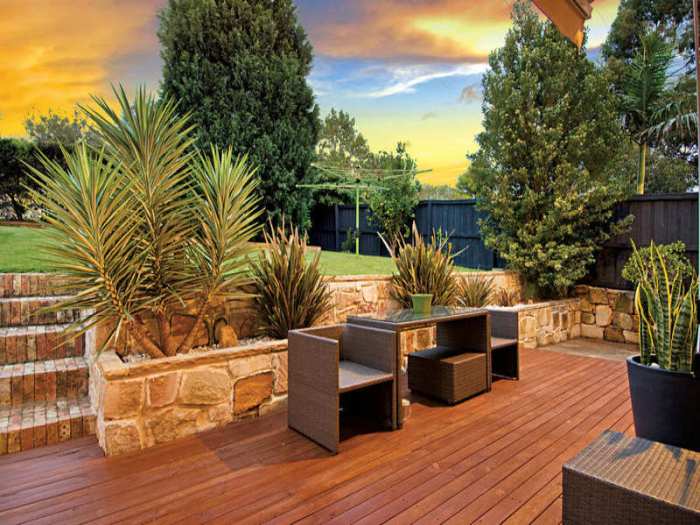
Source: reastatic.net
Creating a beautiful and functional backyard living space involves careful consideration of several key design elements. The right blend of aesthetics and practicality will transform your outdoor area into a comfortable and enjoyable extension of your home. Think about how you envision using the space – relaxing, entertaining, dining – and let that guide your choices.
The overall success of your design hinges on a harmonious interplay of landscaping, lighting, and hardscaping. These elements work together to create the desired ambiance, shaping the mood and functionality of the space. Careful planning in these areas ensures a cohesive and inviting atmosphere.
Landscaping’s Impact on Ambiance
Landscaping plays a crucial role in setting the tone of your backyard living space. The selection of plants, their arrangement, and the overall style significantly influence the aesthetic appeal and the overall feel of the area. For instance, lush greenery creates a tranquil and private oasis, while carefully manicured lawns offer a more formal and structured environment. Consider incorporating a mix of textures, colors, and heights for visual interest. Adding features like a water feature (a small pond or fountain) can introduce a soothing element and enhance the soundscape. The choice of plants should also consider local climate and maintenance requirements.
Lighting’s Role in Atmosphere
Lighting is paramount in setting the mood and extending the usability of your backyard living space into the evening hours. Strategic lighting design can highlight architectural features, accentuate plants, and create distinct zones within the space. Ambient lighting, such as string lights or pathway lighting, provides a soft and welcoming glow, perfect for relaxation. Task lighting, like spotlights in dining areas or reading nooks, ensures functionality. Consider incorporating dimmer switches to control the intensity and create different moods. Using warm-toned lighting generally creates a more inviting and relaxing atmosphere than cool-toned lighting.
Hardscaping’s Contribution to Structure and Style
Hardscaping elements, such as patios, walkways, retaining walls, and fire pits, provide structure and define the different areas within your backyard living space. The materials used for hardscaping significantly impact the overall aesthetic. Natural stone creates a rustic and timeless look, while concrete offers versatility and durability. Consider the style of your home and the surrounding landscape when choosing hardscaping materials. For example, a modern home might pair well with clean lines and sleek concrete, while a traditional home might benefit from the warmth of natural stone or brick. Proper placement of hardscaping elements can also enhance functionality, creating defined areas for dining, lounging, or entertaining.
Material Comparison for Backyard Living Spaces
| Material | Flooring | Furniture | Structures |
|---|---|---|---|
| Wood | Warm, natural look; requires maintenance | Classic, versatile; needs protection from elements | Pergolas, and decks; require regular treatment |
| Concrete | Durable, low-maintenance; can be stained or stamped | Modern, sleek; limited design options | Patios, walkways; strong and long-lasting |
| Stone (Natural) | Elegant, durable; expensive; can be uneven | Rustic, luxurious; heavy, and expensive | Retaining walls, and fireplaces; durable and visually appealing |
| Wrought Iron | Not typically used for flooring | Durable, and elegant; can rust if not maintained | Fencing, gates; strong and decorative |
Functionality and Uses
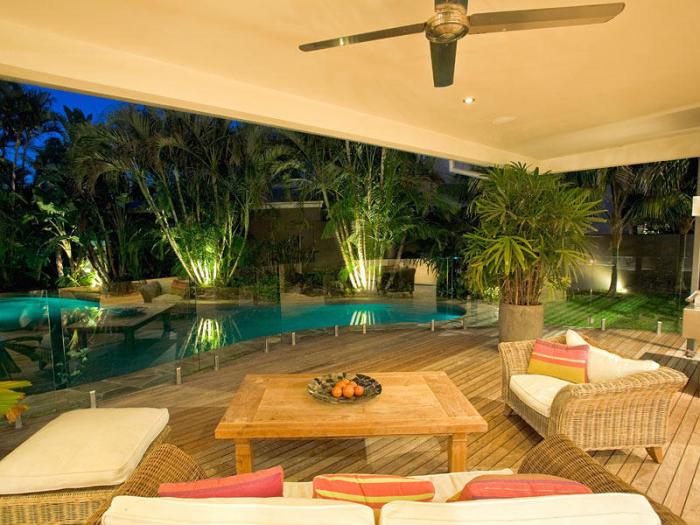
Source: reastatic.net
Your backyard living space should be a reflection of your lifestyle and how you envision using your outdoor area. Understanding the primary functions you want your space to serve is crucial for effective design. This will guide your choices in terms of layout, materials, and furnishings.
Different backyard living spaces cater to specific needs. Designing for these functions requires considering unique spatial requirements, material choices, and overall aesthetics. For example, a dining area demands a different approach than a space designed purely for relaxation.
Dining Areas
A dedicated dining area in your backyard offers a wonderful opportunity to enjoy meals al fresco. Consider the size of your typical gatherings when determining the size of the table and seating arrangement. Durable, weather-resistant materials like teak or wrought iron are ideal for outdoor dining furniture. Adequate lighting is essential for evening meals, and consider adding overhead lighting or strategically placed lanterns. A nearby grill or outdoor kitchen can seamlessly integrate food preparation with dining.
Relaxation Zones
Relaxation spaces prioritize comfort and tranquility. This might involve comfortable seating like a hammock, Adirondack chairs, or a plush outdoor sofa. Soft lighting, such as string lights or lanterns, contributes to a peaceful atmosphere. Incorporating elements like a water feature (a small fountain or pond) or lush greenery can enhance the relaxing ambiance. Consider the placement of the relaxation area to maximize shade or sun exposure, depending on your preference.
Entertainment Spaces, Backyard living spaces
Entertainment areas require a more flexible and adaptable design. This might involve ample seating arranged around a fire pit or outdoor fireplace, a built-in bar, or a dedicated game area. Good lighting is crucial for evening gatherings, and consider the inclusion of sound systems for music. Durable, easy-to-clean materials are a practical choice for high-traffic areas. Think about the flow of movement within the space to ensure comfortable interaction among guests.
Multi-functional Spaces
Many backyard living spaces successfully integrate multiple functions. For instance, a large patio can accommodate both a dining area and a relaxation zone. A pergola or pavilion can provide shade for dining while also offering a sheltered spot for relaxing or entertaining. Modular furniture allows for adaptable arrangements to suit different needs. A strategically placed fire pit can serve as both a focal point for socializing and a source of warmth on cooler evenings. For example, a large patio with a built-in seating area surrounding a fire pit could serve as a dining area (with a table placed near the seating), a relaxation zone (with comfortable cushions on the seating), and an entertainment space (with guests gathering around the fire). This combination maximizes the use of space and creates a versatile outdoor living area.
Creating a Budget-Friendly Backyard Oasis
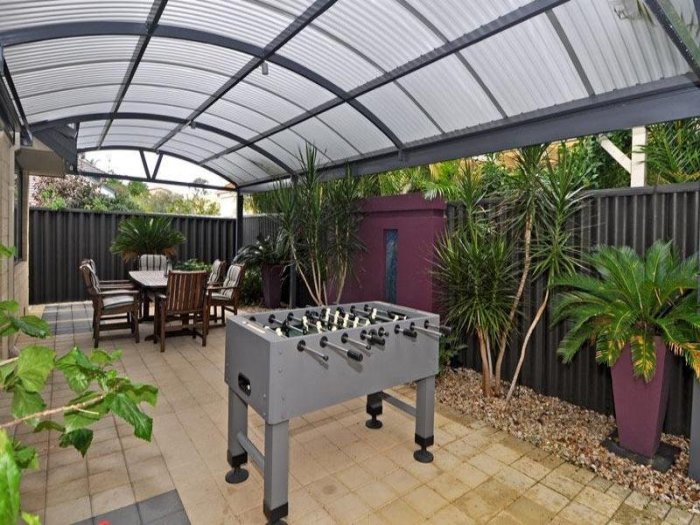
Source: reastatic.net
Transforming your backyard into a relaxing retreat doesn’t require breaking the bank. With careful planning and creative choices, you can achieve a stunning and functional outdoor space without exceeding your budget. In this section Artikel strategies for designing a budget-friendly backyard oasis, focusing on material selection, cost-saving techniques, and prioritizing essential features.
Creating a budget-friendly backyard living space involves a strategic approach to design and material selection. Prioritizing essential features and employing cost-saving measures are crucial for staying within your financial limits while still achieving a beautiful and functional outdoor area.
Material Choices and Cost-Saving Strategies
Smart material choices significantly impact the overall cost. Opting for readily available and affordable materials can lead to substantial savings without compromising the aesthetic appeal. For example, instead of expensive pavers, consider using gravel or repurposed materials like old bricks for pathways. Similarly, using readily available lumber for building structures instead of pre-fabricated kits can save money. Building or repurposing furniture from pallets is a popular and cost-effective option. For seating, consider using outdoor-rated cushions on simple benches or even repurposed furniture. Using readily available plants and seeds, rather than purchasing expensive mature plants, also contributes to cost savings. Consider painting existing fences or structures instead of replacing them entirely; a fresh coat of paint can significantly enhance the look of your space at minimal cost. Finally, DIY projects, where feasible, can drastically reduce labor costs.
Essential and Optional Features Prioritization
Before starting any project, prioritize your needs. Essential features might include a comfortable seating area, adequate lighting for evening use, and a basic water source (e.g., a simple hose bib). Optional features could be a fire pit, an elaborate water feature, or extensive landscaping. Prioritizing essential features ensures that your budget is allocated effectively, and you don’t overspend on non-essential elements. A simple seating area with comfortable cushions and a string of outdoor lights might be sufficient for a basic but functional space. Adding a fire pit or a more extensive landscaping project could be considered later as the budget allows.
Maximizing Space and Functionality on a Budget
Maximize the available space by employing clever design techniques. Vertical gardening can increase usable space while adding aesthetic appeal. Using multi-functional furniture, such as benches with built-in storage, helps save space and provides additional practicality. Consider repurposing items you already own; old crates can become planters, and discarded pallets can be transformed into seating or a small table. Careful planning and strategic placement of elements ensure optimal space utilization. For instance, placing taller plants at the back of a garden bed creates depth and visual interest without consuming excessive space. Similarly, using mirrors strategically can create an illusion of more space. By using these strategies, you can create a functional and visually appealing backyard oasis even within a tight budget.
Incorporating Sustainability
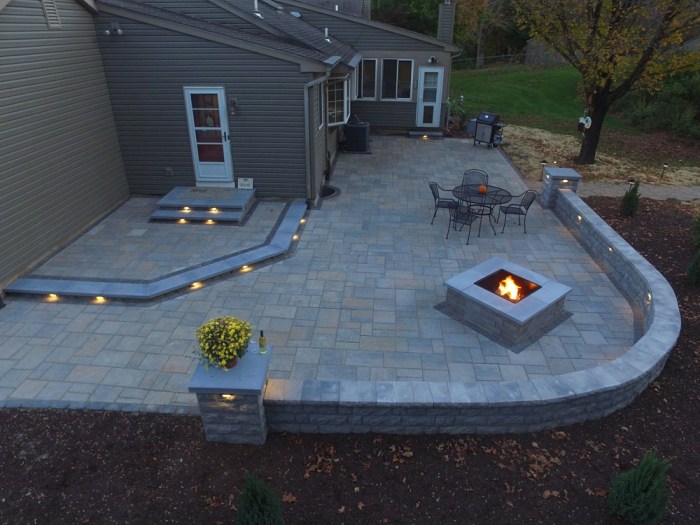
Source: jbslandscape.com
Creating a sustainable backyard living space isn’t just about being eco-conscious; it’s about building a more resilient and enjoyable outdoor area that benefits both you and the environment. By thoughtfully choosing materials and implementing energy-efficient practices, you can minimize your environmental impact while maximizing the longevity and beauty of your outdoor retreat. This approach often leads to cost savings in the long run, making it a smart and responsible choice.
Sustainable design principles focus on reducing waste, conserving resources, and minimizing the impact on the surrounding ecosystem. This means considering the entire lifecycle of materials, from sourcing and manufacturing to disposal and opting for options that are durable, recyclable, or compostable. Energy efficiency plays a crucial role as well, reducing your reliance on non-renewable resources and lowering your carbon footprint.
Eco-Friendly Material Selection
Choosing materials with low environmental impact is fundamental to sustainable backyard design. This involves selecting materials sourced responsibly, manufactured with minimal energy consumption, and designed for durability and longevity to reduce the need for frequent replacements. Consider the following options:
- Recycled materials: Incorporating recycled plastic lumber, reclaimed wood, or recycled metal for decking, fencing, or furniture significantly reduces landfill waste and lowers the demand for newly extracted resources. Imagine a patio built from recycled plastic lumber – it’s durable, low-maintenance, and environmentally friendly.
- Locally sourced materials: Opting for materials sourced locally reduces transportation emissions associated with shipping and delivery. Using locally harvested lumber for a pergola, for example, minimizes your carbon footprint. The unique character of locally sourced wood also adds a special touch.
- Sustainable wood: Choose wood certified by organizations like the Forest Stewardship Council (FSC) to ensure it comes from responsibly managed forests. This certification guarantees sustainable harvesting practices that protect biodiversity and forest health. A deck built with FSC-certified wood is a beautiful and responsible choice.
- Bamboo: A rapidly renewable resource, bamboo is a strong and versatile material suitable for fencing, decking, or furniture. Its rapid growth makes it a sustainable alternative to traditional lumber.
Energy-Efficient Solutions
Integrating energy-efficient solutions into your backyard design can significantly reduce your environmental impact and lower your energy bills.
- Solar lighting: Solar-powered pathway lights, string lights, or spotlights eliminate the need for grid electricity, reducing your reliance on fossil fuels and lowering your carbon footprint. Imagine a beautifully lit pathway powered entirely by the sun.
- Water conservation: Installing a rainwater harvesting system to collect rainwater for irrigation significantly reduces your reliance on municipal water supplies. The collected water can be used to water plants, reducing water consumption and saving money on water bills. A simple rain barrel connected to downspouts can be highly effective.
- Low-energy appliances: If you’re incorporating outdoor appliances like a grill or a refrigerator, choose energy-efficient models. Look for Energy SStar-certified appliances to ensure they meet energy efficiency standards.
Benefits of Sustainable Backyard Design
The benefits of incorporating sustainable practices extend beyond environmental protection. They also contribute to a healthier, more enjoyable, and potentially more cost-effective outdoor living space.
- Reduced environmental impact: Sustainable design minimizes your carbon footprint, conserves natural resources, and reduces pollution. This contributes to a healthier planet for future generations.
- Increased property value: Eco-friendly features can increase the value of your property, making it more attractive to potential buyers.
- Lower maintenance costs: Durable, sustainable materials often require less maintenance than conventional options, saving you time and money in the long run. For example, recycled plastic lumber is virtually maintenance-free compared to traditional wood.
- Healthier living environment: Sustainable practices can contribute to a healthier outdoor environment by reducing exposure to harmful chemicals and pollutants found in some conventional materials.
Visual Inspiration
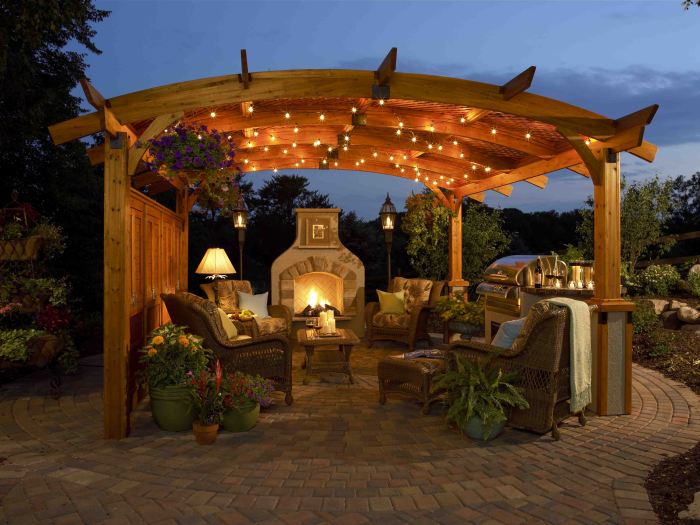
Source: thelandscapingpros.com
Choosing a style for your backyard living space is key to creating a cohesive and enjoyable outdoor retreat. The style you select will dictate the overall feel, influencing everything from the color palette to the materials used and the types of furniture you choose. Let’s explore some popular options to inspire your design.
Modern Minimalist Backyard Living Spaces
A modern minimalist backyard space prioritizes clean lines, simple forms, and a neutral color palette. The focus is on functionality and creating a sense of calm and spaciousness.
- Color Palette: Think muted grays, whites, blacks, and perhaps a single accent color like a deep teal or charcoal. Avoid overly bright or clashing colors.
- Materials: Concrete, sleek metal (stainless steel or powder-coated aluminum), glass, and natural wood (often treated for weather resistance) are common choices. Clean, geometric patterns might be incorporated into paving or screens.
- Furniture: Low-profile seating with clean lines, perhaps a modular sofa system that can be rearranged easily. Simple, geometric planters and minimalist outdoor lighting fixtures complete the look. Imagine sleek, dark gray concrete planters holding architectural grasses, and a low, rectangular fire pit made of corten steel.
Rustic Backyard Living Spaces
Rustic styles evoke a sense of warmth, comfort, and connection to nature. Natural materials and a relaxed, lived-in feel are central to this aesthetic.
- Color Palette: Earthy tones dominate, such as browns, greens, creams, and muted reds. Think of the colors found in natural wood, stone, and foliage.
- Materials: Natural wood (untreated or with a natural finish), stone (flagstone, cobblestone), wicker, and wrought iron are frequently used. Reclaimed wood adds character and authenticity.
- Furniture: Oversized, comfortable seating in natural materials like wicker or wood. A large, rustic wooden dining table is a focal point, perhaps accompanied by mismatched chairs for a relaxed, inviting feel. Think of a weathered wooden pergola draped with climbing plants, providing shade and a romantic touch.
Tropical Backyard Living Spaces
Tropical designs bring the vibrancy and lushness of a tropical paradise to your backyard. Bright colors, natural textures, and abundant greenery are key.
- Color Palette: Vibrant jewel tones like emerald green, sapphire blue, coral, and sunny yellow are prominent. These are often complemented by softer, neutral tones like beige or cream.
- Materials: Natural materials like bamboo, rattan, and teak are frequently used, often combined with colorful textiles and patterned cushions. Water features, like a small fountain or pond, are a common element.
- Furniture: Lightweight, airy furniture made from materials like wicker or bamboo. Colorful cushions and throws add comfort and personality. A hammock or hanging chair provides a relaxing spot to enjoy the tropical atmosphere. Imagine bright yellow and turquoise cushions on a woven rattan sofa set, surrounded by lush ferns and palms.
Addressing Practical Considerations
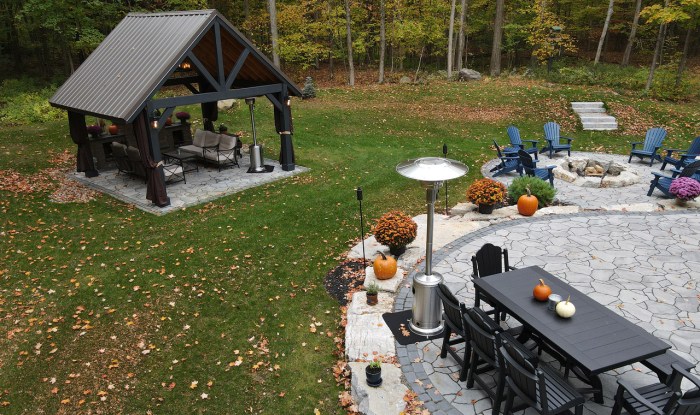
Source: peakec.com
Creating a beautiful and functional backyard living space requires careful consideration of practicalities beyond aesthetics. Factors like weather, maintenance, and durability significantly impact the longevity and enjoyment of your outdoor haven. Ignoring these aspects can lead to costly repairs, frustrating upkeep, and ultimately, a less enjoyable space. This section addresses potential challenges and offers solutions for creating a resilient and low-maintenance outdoor retreat.
Weather conditions and maintenance needs vary drastically depending on your chosen design and materials. A fully enclosed structure, for instance, requires less frequent cleaning than an open-air patio but may necessitate more robust weatherproofing. Similarly, natural materials like wood require regular treatment to prevent rot and insect damage, while synthetic materials might demand less upkeep but could be less aesthetically pleasing to some.
Weather Protection Strategies
Effective weather protection is crucial for extending the usable life of your backyard living space. For regions with harsh winters, consider a covered structure with a sturdy roof to shield furniture and surfaces from snow and ice. In areas with intense sun, a pergola or awning provides shade and reduces heat buildup. Materials like treated lumber, weather-resistant fabrics, and durable synthetic decking are all designed to withstand various weather conditions. Regular cleaning and sealing of outdoor furniture and surfaces will also extend their lifespan. For example, a well-maintained teak wood patio set can last for decades with proper care, while an uncovered metal set might rust quickly in a humid climate.
Pest Control and Maintenance
Preventing pest infestations is another vital consideration. Regular cleaning and maintenance are key to deterring pests like insects and rodents. Choosing materials that are less attractive to pests, such as treated wood or pest-resistant plants, can further reduce infestation risks. Consider installing screens on windows and doors in enclosed structures to keep insects out. For larger pests, professional pest control services might be necessary. Regular inspection of your living space for signs of damage or pest activity will allow for early intervention and prevent larger, more costly problems. For instance, promptly addressing termite damage in a wooden structure can prevent extensive and expensive repairs later on.
Design Choices for Durability and Longevity
Selecting durable materials is fundamental to creating a long-lasting backyard living space. Hardwood decking, for example, is more resistant to wear and tear than softwoods. Similarly, high-quality outdoor furniture made from materials like wrought iron or aluminum will withstand the elements better than cheaper alternatives. Using weather-resistant paints and sealants on surfaces can protect them from damage caused by UV rays, moisture, and temperature fluctuations. Consider the overall design’s simplicity; less intricate designs are generally easier to maintain and repair. A simple, well-constructed pergola will require less upkeep than an elaborate gazebo.
Backyard Living Spaces and Home Value
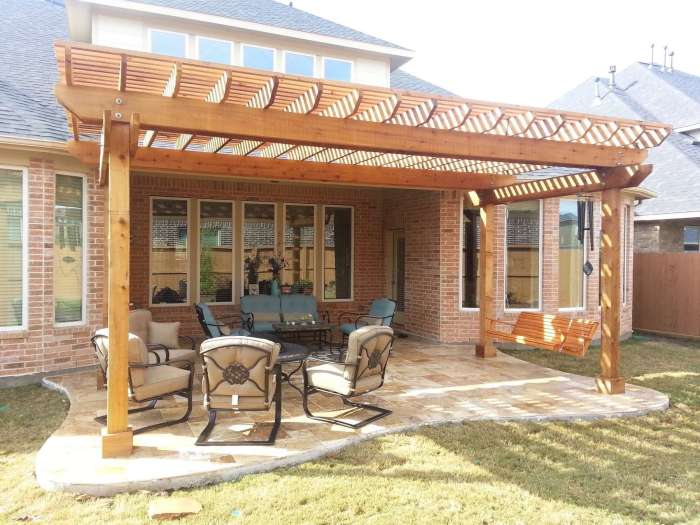
Source: mb-landdesign.com
Creating a well-designed backyard living space can significantly boost your home’s value and appeal to potential buyers. A thoughtfully planned outdoor area transforms a simple yard into an extension of your living space, increasing both the functionality and desirability of your property. This translates directly into a higher asking price and a faster sale when the time comes.
Investing in outdoor improvements can offer a strong return on investment (ROI), though the specific amount varies depending on the location, the type of improvement, and the overall condition of the home. However, generally speaking, enhancing your backyard offers a compelling way to increase your home’s worth.
Outdoor Kitchen ROI
An outdoor kitchen, complete with a grill, countertops, and perhaps a refrigerator, can significantly increase a home’s value. Imagine a sleek, built-in grill station nestled under a pergola, complete with granite countertops and a mini-fridge. This creates a high-end feel and adds considerable functionality, appealing to buyers who entertain frequently or appreciate outdoor cooking. While the initial cost can be substantial, the added value often exceeds the expense, particularly in competitive markets. The ROI for an outdoor kitchen is often cited to be between 50% and 75%, meaning that for every dollar spent, you could potentially recoup between $0.50 and $0.75 in increased home value.
Fire Pit and Seating Area ROI
A fire pit with comfortable seating provides a cozy and inviting gathering space. Picture a circular stone fire pit surrounded by plush outdoor sofas and armchairs, perfect for evening gatherings. This creates a focal point for relaxation and socializing, making the backyard a more attractive and livable space. The return on investment for a fire pit and seating area is generally considered moderate, often ranging from 30% to 50%. The exact return will depend on factors such as the quality of materials used and the overall design of the space.
Swimming Pool ROI
A swimming pool is a significant investment, and its ROI is highly variable and location-dependent. In warmer climates with high demand for pools, the return can be substantial. However, in cooler climates or areas with less demand, the ROI may be lower or even negative. It’s crucial to consider local market trends before investing in a pool. While a pool can dramatically increase a home’s desirability and sale price, the upfront cost and ongoing maintenance should be carefully weighed against the potential return. Studies show that while pools can add value, the ROI can range widely, from a low of 10% to a high of 70%, depending heavily on location and market conditions. For instance, a pool in a high-end desert community might yield a significantly higher return than one in a rural area.
Summary
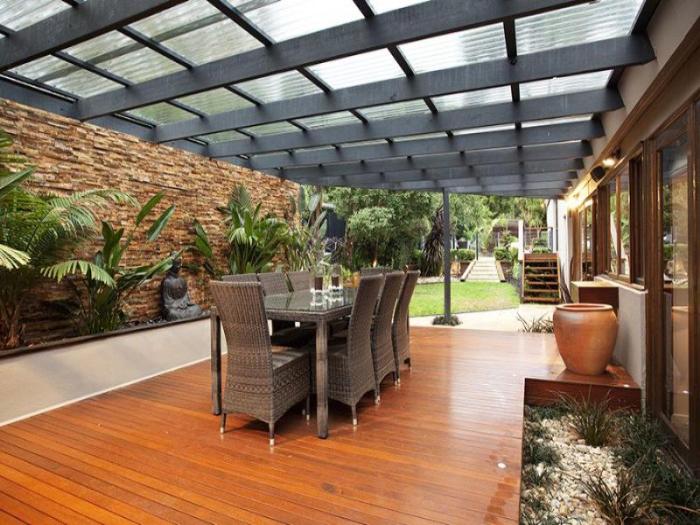
Source: reastatic.net
Creating your ideal backyard living space is a journey of creativity and practicality. By carefully considering design elements, functionality, budget, and sustainability, you can transform your outdoor area into a valuable extension of your home, a place for relaxation, entertainment, and cherished memories. Remember to prioritize your needs and preferences, and don’t be afraid to experiment with different styles and ideas to create a unique and personalized space you’ll love. The result? A beautiful, functional, and enjoyable outdoor living area that adds value to your home and enriches your life.
